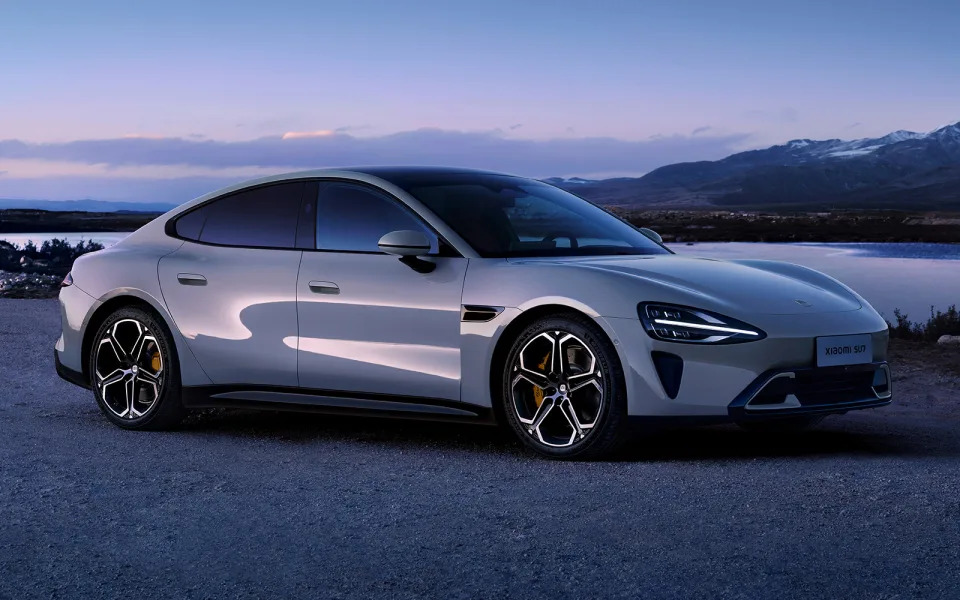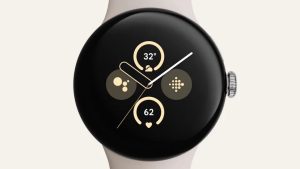Xiaomi, originally known for affordable smartphones, has ventured into the electric car market with its inaugural model, the Xiaomi SU7. Unveiled in Beijing, this sedan is built on Xiaomi’s Modena Architecture, featuring HyperEngine electric motors with a remarkable speed of up to 21,000rpm. The chassis, manufactured with a clamping force of 9,100 tons using Xiaomi’s die casting machines, surpasses that of Tesla.
The SU7 will be available in two variants: the dual-motor all-wheel-drive SU7 Max and the single-motor rear-wheel-drive SU7. While the pricing is yet to be disclosed, Xiaomi claims impressive specifications for the SU7 Max, including a range of up to 800km (497 miles) according to the China Light-Duty Vehicle Test Cycle (CLTC). It boasts a rapid 0-100km/h acceleration of just 2.78 seconds, outperforming Tesla’s Model S and Porsche’s Taycan Turbo.
These remarkable figures are attributed in part to CATL’s 101kWh 800V high-voltage platform, offering the SU7 Max a 220km range with a mere 5-minute charge, 390km in 10 minutes, or 510km in 15 minutes. The base model, equipped with a smaller 73.6kWh battery, supports 400V charging and provides a range of up to 668km or 415 miles.

Xiaomi enlisted talents from the automotive industry for the realization of its electric car project. CEO Lei Jun revealed that Tianyuan Li, formerly associated with BMW’s iX series and iVision concepts, voluntarily joined Xiaomi’s auto design team. Li was joined by James Qiu, known for his work on Mercedes-Benz’s Vision EQXX design. Subsequently, Chris Bangle, a seasoned BMW veteran, was recruited as their design consultant.
The Xiaomi SU7, comparable in size to the BMW 5 series, stands at 1,440mm tall, 1,963mm wide, and 4,997mm long. It offers three color options: the distinctive “aqua blue,” gray, or olive green. Emphasizing generous legroom and trunk spaces of 517L in the back and 105L in the front, Lei highlighted these features during the launch event.
Lei drew attention to intricate design details such as the “water droplet” headlamps, each resembling the Chinese character for “rice” (the “mi” in “Xiaomi”), and the halo rear brake light consisting of 360 LEDs. Additionally, he explained the choice of half-hidden door handles, noting that more flush handles are reportedly less user-friendly in cold weather.

As previously hinted by Xiaomi, the SU7 comes equipped with the HyperOS in-car entertainment system, powered by Qualcomm’s Snapdragon 8295 processor and boasting a rapid 1.49-second boot time. The 16.1-inch 3K central screen allows users to access media, adjust seats, and control Xiaomi appliances. Additionally, optional Xiaomi Pad tablets can be mounted on magnetic ports behind the front headrests, offering up to 22.5W output. The central screen’s UI supports up to three split windows for multitasking, and users can seamlessly cast their Xiaomi phone’s screen for an integrated experience. Entertainment features are enhanced by 23 internal Dolby Atmos speakers.
Lei highlighted Xiaomi’s commitment to opening up the Xiaomi CarIOT ecosystem to third parties, exemplifying this with a smart booster car seat that can remind users to fasten their seat belts. Notably, iPhone users can also benefit from Xiaomi car features, with support for wireless CarPlay and AirPlay connectivity, as well as iPad-mounting options for rear passengers.
Understanding the preference for physical buttons among car owners, Xiaomi has retained some for climate control. Additionally, two extra buttons are included, one for toggling the spoiler (primarily for display purposes, according to Lei) and another for adjusting body height to prevent bottom scratching if needed. An optional row of buttons beneath the central display is also available.

The Xiaomi SU7 will feature autonomous driving capabilities powered by the Xiaomi Pilot platform, which incorporates up to two NVIDIA Drive Orin processors (the base model includes one) and a range of sensors. Among these sensors is a top-mounted Lidar with a visual range of up to 200m and pixel accuracy down to 0.1m, enhancing detection for thinner and smaller obstacles. Xiaomi demonstrated the SU7’s ability to navigate through a busy street with mixed obstacles, perform valet parking, and autonomously park in a robotic car park with tight spaces. Xiaomi asserts that the SU7’s sensors are designed to handle snowy and rainy climates, typical of its Beijing-based origin.
Lei mentioned Xiaomi’s goal to conduct autonomous driving tests in 100 cities across China by the end of 2024, although the timeline for nationwide approval of autonomous driving remains uncertain.
Additionally, Xiaomi teased upcoming advancements, including the HyperEngine V8s with a record-breaking 27,200rpm, housed in stronger silicon steel for motor stability. This technology is reportedly ready for mass production and slated for car integration by 2025. Xiaomi also hinted at next-generation electric motor technology based on carbon fiber, boasting a remarkable 35,000rpm capability, although it is expected to take longer to become available.

Xiaomi has not disclosed the prices for the SU7 line, but CEO Lei Jun has suggested that they will be on the higher end. The definition of “expensive” can be subjective, and precise pricing details are expected to be revealed in the coming months. The availability of the SU7 outside of China remains uncertain, and a launch in the United States is not anticipated in the near future, if at all.
In the meantime, Xiaomi offers limited edition colors for its Xiaomi 14, 14 Pro smartphones, and the Xiaomi Watch S3 eSIM—available in either aqua blue or olive green—to complement the upcoming SU7.




